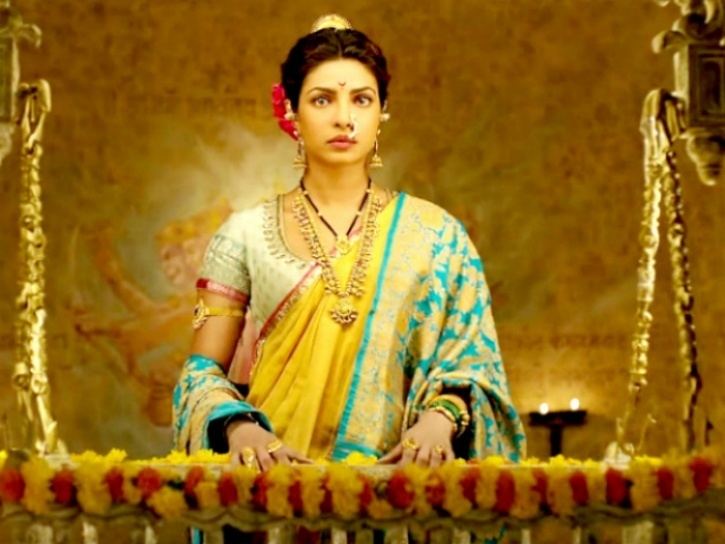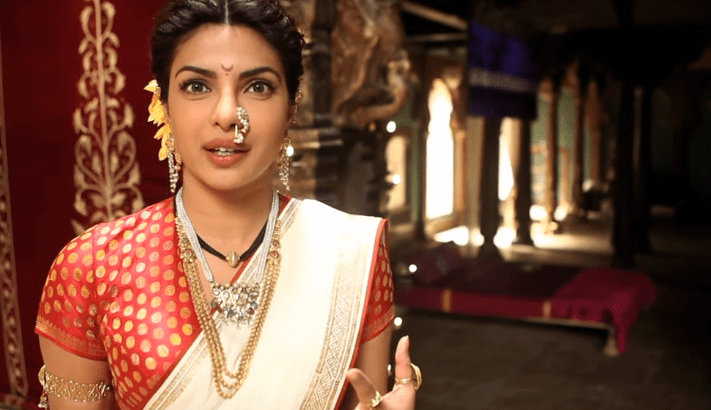Spouse Bajirao I | Great grandchild Madhavrao II | |
 | ||
Children Balaji Baji Rao, Janardan Rao Parents Shiubai, Mahadji Krishna Joshi Grandchildren Madhavrao I, Narayan Rao, Vishwasrao Similar | ||
Making of character kashibai bajirao mastani priyanka chopra
Kashibai was the first wife of Bajirao I, who is acknowledged as the most influential of the nine Peshwas from the Bhat family, a general and prime minister to the fourth Maratha Chhatrapati(Emperor) Shahuji of present-day India.
Contents
- Making of character kashibai bajirao mastani priyanka chopra
- The making of kashibai bajirao mastani priyanka chopra ranveer singh
- Biography
- In Popular Culture
- References

The making of kashibai bajirao mastani priyanka chopra ranveer singh
Biography

Kashibai was a daughter of Mahadji Krishna Joshi and Shiubai of Chas, belonging to a wealthy banker family. She also had a brother named Krishnarao Chaskar. She was married to Bajirao on March 11, 1720 in a household ceremony at Saswad.

Kashibai and Bajirao had four sons together. Balaji Baji Rao a.k.a. Nanasaheb, was born in 1721 and was later appointed Peshwa by Shahu in 1740 after Bajirao's death. Second son Ramchandra died young. Third son Raghunath Rao served as the Peshwa during 1773–1774 and fourth son Janardan also died young. She suffered from a type of arthritis.

Bajirao married Mastani, daughter of Hindu king Chhatrasal of Bundelkhand and his wife Ruhaani Bai, a Persian Muslim. This marriage was not accepted by Bhat family. Kashibai is also noted to have not played any role in the household war waged by Peshwa family against Mastani. Historian Pandurang Balkawade notes that various historical documents suggest that she was ready to accept Mastani as Bajirao's second wife, but could not do so going against her mother-in-law Radhabai and brother-in-law Chimaji Appa. Like many women of 18th century orthodox India, she had no say in important matters.

As the Brahmins of Pune boycotted Peshwa family due to Bajirao's relations with Mastani, Chimaji Appa and Balaji Baji Rao a.k.a. Nanasaheb resolved to forceful separation of Bajirao and Mastani in early 1740. While Bajirao was out of Pune on expedition, Mastani was put under house arrest. Seeing deteriorating health of Bajirao, Chimaji asked Nanasaheb to release Mastani and send her to meet Bajirao. Nanasaheb instead sent his mother Kashibai. Kashibai is said to have served him on his deathbed as a loyal and dutiful wife and has been described as highly devoted to her husband. She and her son Janardan performed the last rites.

After death of Bajirao, Mastani died soon in 1740 and Kashibai took care of their son Shamsher Bahadur and made facilities to train him in weaponry. She became more religious after her husband's death. She performed various pilgrimages and stayed in Banaras for four years. On one such tour she was accompanied with 10,000 pilgrims and had expenditure of rupees one lakh. Returning from a pilgrimage in July 1747, she commissioned a temple dedicated to Shiva in her hometown Chas naming it Someshwar Temple. Built in 1749, the temple stands on a 1.5 acres (0.61 ha) land and is popular for Tripurari Poornima celebrations and finds mention in the Marathi book Sahali Ek Divasyachya Parisaraat Punyachya as a tourist spot near Pune.
In Popular Culture
In the 2015 fictional drama film Bajirao Mastani directed by Sanjay Leela Bhansali, Kashibai was portrayed by actress Priyanka Chopra. Her dance sequence in the song "Pinga" and her dressing sense met criticism from both Kashibai's and Mastani's descendant along with an outcry in social media. Few historians also opined that apart from the inappropriateness of a woman of such stature to dance in public, Kashibai also suffered from a type of arthritis and such dance was not physically possible.
